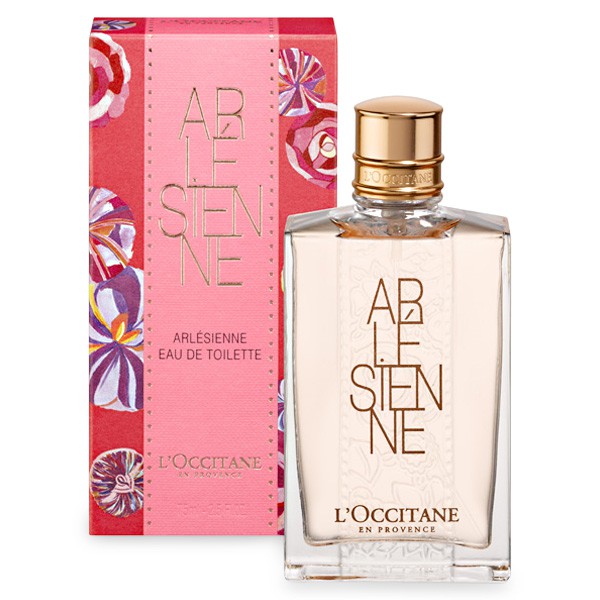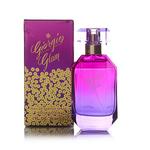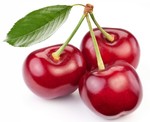L'Occitane Arlésienne (2014): Catch Me If You Can {Perfume Short (Review)} {Violet Notebook}

Arlésienne by L'Occitane smells like a pretty standard musky floral at first. There are floral violet nuances interpersed, which add a slightly more complicated feel to the composition...
The fragrance was also designed to smell a bit of macaron - the vanilla is meringue-y. Citrusy accents lift the fragrance so that it does not resort completely to sweet, soft, and pillowy nuances.
To me, initially, the eau de toilette seems to be clearly too close to a toiletry product for comfort. This affinity can be felt in the slightly harsh musk nuances which remind you of the raw and plain notes, sociologically speaking, of a savon de Marseille although admittedly the scent is interesting.
The perfume however ends up blooming better on the skin, feeling rounder and more harmonious at the seams until it charms you a bit more, but not completely.
The blooming seems to be due to a blended-in, both fruity and animalic jasmine although the brand only mention muguet.
A last impression in perfumery is more important than a first impression on the long term. If amazing top notes might be a good selling point in the crowded environment of a bustling boutique, in the quiet of your home, it's really the base notes and sillage which leave a lasting impression and which will make you want to wear the perfume again. So, if you have to choose as a perfumer to work more on one part of the composition due to lack of money - or even due to just lack of time - it's a wiser choice to concentrate on the base.
If the beginning of the perfume was ho-hum, the rest of the story makes an effort to illustrate the myth of the Arlésienne.
The violet slowly becomes more central a motif. It is powdery, fluffy even, downy, but with a counterpoise of citrus until it evolves into a more uniformely powdery texture. The violet treatment is closest in my mind to Aimez-Moi by Caron, one of the loveliest violet perfumes you could hope to experience. Arlésienne is however less of a paradoxical composition, one in which the violets have become joyous. In Arlésienne, the violet is more restrained, yet not melancholy as it tends to be.
In-house perfumer Karine Dubreuil has tackled the myth of the Arlésienne, who is elusiveness incarnate, with the violet. This is appropriate for two reasons at least. One is that that myth being a romantic one, and one about a dreamy woman who never materializes for good in reality, it is meaningful olfactory idea to seek the violet note which is a little bit of all of the above. The second reason is that violet is known for its effect on our neurological system as a flower whose scent is elusive, literally. We cannot smell a violet past a few moments, without the sensation disappearing after a little while, and then reappearing. In the world of natural scents, the fragrance of the violet is an Arlésienne, desired yet impossible to grasp for long.
Laertes in Hamlet evokes this catch-me-if-you-can aspect of the scent of violets,
A violet in the youth of primy nature,
Forward, not permanent, sweet, not lasting,
The perfume and suppliance of a minute.
Beyond that, the perfume is an honest and even fairly pretty violet composition but the problem is that there is no Wow factor, for me at least, to it. It smells too much like its toiletries line. I can think of a number of perfumes which might be more enthralling to wear for their violet notes, or saffron, or rose notes, the three main notes, we are told. This is clearly not the end of that story. The Arlésienne still needs a perfume on a par wth its myth.
Notes: saffron and mandarin in the top; lily of the valley and rose in the heart; violet, sandalwood and tonka bean.









